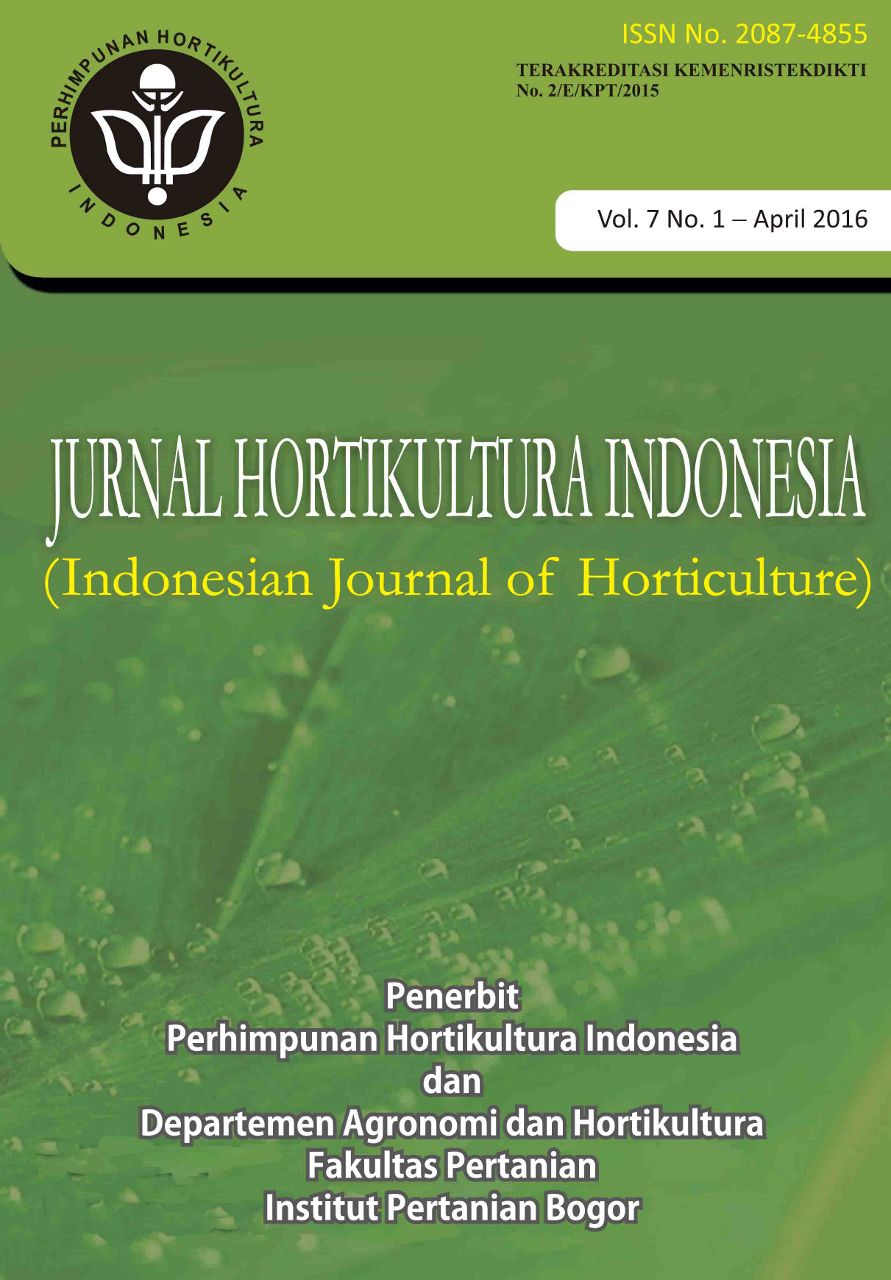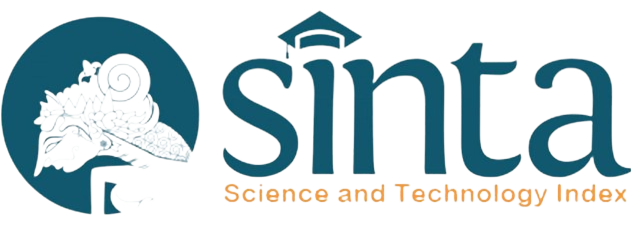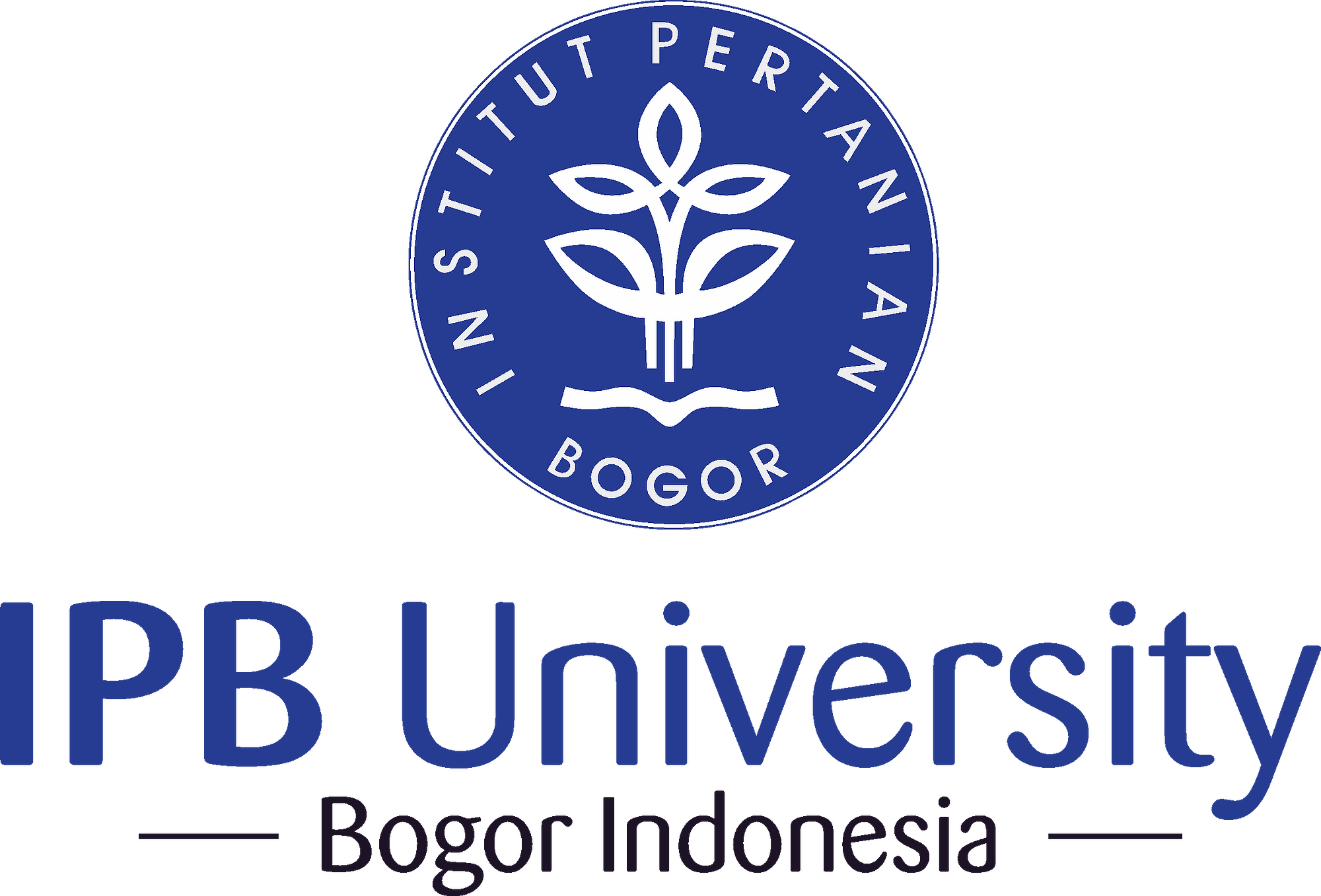Budidaya Bawang Merah (Allium ascalonicum L.) pada Lahan Kering Menggunakan Irigasi Sprinkler pada berbagai Volume dan Frekuensi
Abstract
ABSTRACT
Shallot is one of important commodity besides chili and potatoes. Shallot is cultivated on dry land. The dry land used in Indonesia is still relatively small, while the potential of this area is considered large for the development of agriculture. Pressurized irrigation system has the advantage of efficient use of water making it suitable to be applied on dry land. The study consisted of two experiments, the effect of irrigation volume and frequency of irrigation influence on the growth of shallot. The research was conducted at the Experimental Station Teaching Farm and Postharvest Laboratory Department of Agronomy and Horticulture, Bogor Agricultural University from October 2014 to April 2015. The research consisted of two experiments by using a Randomized Block Design with four replications. The treatment in the first experiment was percentage of the volume of irrigation water consisting of five levels (S100% ETc, S75% ETc, S50% ETc, S25% ETc (with sprinkler) and 100% ETc conventional (without sprinkler). The treatment in the second experiment was frequency of irrigation consisting of four levels (two times a day, once a day, once in two days one and once in three days). Results of the first experiment showed the plants could grow
and produced up to S25% ETc or 81.17% water available for evapotranspiration, but the best treatment was S100% ETc volume irrigation, based on yields. Watering with sprinkler irrigation provided better effect than manual watering which was usually done by farmers. The second eperiment showed that the best watering frequency for vegetative growth was once a day while for total yield was twice a day.
Key words: dryland, irrigation, shallot, sprinkler, total yield, vegetative growth,
ABSTRAK
Bawang merah salah satu komoditas unggulan nasional selain cabai dan kentang. Budidaya bawang merah umumnya dilakukan pada lahan kering dan membutuhkan irigasi. Sistem irigasi bertekanan memiliki keunggulan dalam efisiensi penggunaan air sehingga cocok untuk diterapkan
pada lahan kering. Penelitian terdiri atas dua percobaan, yaitu pengaruh volume irigasi dan pengaruh frekuensi irigasi terhadap pertumbuhan dan produksi bawang merah. Penelitian ini dilaksanakan di Kebun Percobaan Teaching Farm dan Laboratorium Pascapanen Departemen Agronomi dan
Hortikultura, Institut Pertanian Bogor dari Oktober 2014 sampai April 2015. Penelitian terdiri atas dua percobaan menggunakan Rancangan Acak Kelompok dengan empat ulangan. Perlakuan pada percobaan 1 adalah persentase volume air irigasi terdiri atas 5 taraf (S100% ETc, S75% ETc, S50% ETc, S25% ETc (dengan sprinkler) dan konvensional 100% ETc (tanpa sprinkler), sedangkan perlakuan pada percobaan 2 adalah frekuensi irigasi terdiri atas 4 taraf yaitu dua kali sehari, satu kali sehari, dua hari sekali, tiga hari sekali. Hasil percobaan menunjukkan tanaman masih dapat tumbuh dan berproduksi sampai volume irigasi S25% ETc atau 81.17% air tesedia sudah dievapotranspirasikan oleh tanaman, tetapi perlakuan terbaik ialah volume irigasi S100% ETc berdasarkan bobot panen total. Penyiraman dengan irigasi sprinkler memberikan efek yang sama bahkan lebih baik dibanding penyiraman secara manual yang biasa dilakukan oleh petani. Frekuensi penyiraman terbaik untuk pertumbuhan vegetatif adalah satu kali sehari sementara untuk bobot panen total adalah dua kali sehari.
Kata kunci: bawang merah, hasil total, irigasi, lahan kering, pertumbuhan vegetatif, sprinkler













